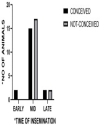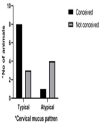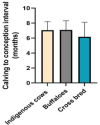Introduction The life of Indian rural people is interlinked with livestock for ages. India is the only country in the world with a large variety of livestock species that significantly contribute to the national economy. The dairy and animal husbandry sector contributes around 4.2 per cent of India’s GDP. It is a primary source of income for about 7 crore rural families (https://thewire.in/agriculture/india-covid-19-dairy-farmers-milk-production). The exotic/crossbred and indigenous/non-descript cattle population in the country is 50.42 million and 142.11 million respectively and the total buffaloes in the country are 109.85 million (Anon 2019). Though dairy contributes to the rural economy directly and indirectly, it is always perceived subsidiary of agriculture. Dairying in India has been and continues to be an important livelihood support activity as over 80 per cent of milk in India is produced by smallholders (Cunningham 2009). Bihar holds 5th position in livestock population with 36.5 million in number, standing 4th in cattle and 5th in buffalo population (Anon 2019). The present study was conducted in rural villages in Kumar Khand block of Madhepura district, Bihar. Kumar Khand is a town in the Madhepura district of Bihar state, located 23 km from the district headquarters namely Madhepura. |
Top Material and Methods As a part of studying the conception rate in the field, the data on feeding and breeding management were randomly taken from 40 animals from various villages with a pre-tested questionnaire as per insemination calls to BAIF insemination center and detailed information regarding feeding and management was recorded along with animal examination. Simple comparison was made on the basis of percentage:
|
Results and Discussion Holding pattern of dairy species: Out of the 40 animals studied, there were 10 (25.00%) buffaloes, 17 (42.50%) crossbred and 13 (32.50%) indigenous animals (Table 1). Deworming practices: Regular deworming was followed in case of 70.00 per cent buffaloes, 88.24 per cent crossbred and 61.54 per cent indigenous animals (Table 1). Gastrointestinal parasitic load is one of the most common reasons for decreased production and economic losses in terms of treatment cost. Regular deworming is one of the most important basic health managements to be followed in any livestock species for optimum production as well as reproduction since parasitic load directly causes deficiency of body usage of nutrients, especially proteins leading to decreased feed efficiency which, otherwise, contributes to the body condition of animals (Ashoo et al 2020). Feeding practices (Table 1) Feeding of green fodder was done twice a day in case of all the animals under study. Drinking water was aslo available to them all the time. In order to express the fullest genetic potential from dairy breeds, feed and environment play a very critical role, especially in the rural areas where dairy animals are fed based on the availability of fodder and crop residues using traditional norms and cost concerns of compound cattle feed. A normal adult animal must be fed 6 kg dry and 15-20 kg green fodder per day with legume and non-legume green fodder being in the proportions of 1:3. Green fodder is the only primary source of vitamin A for lactation besides being more palatable, laxative and possessing utilizable nutrients in natural form (Mohini et al 2007). Dairy animals producing up to 5-7 liters of milk per day can be maintained exclusively by feeding green fodder. The inclusion of green fodder decreases the amount of concentrate feeding and thus increases profit to the owner with a reduction of enteric methane emission by 5-12 per cent on feeding green fodder-based ration to river buffaloes (Prusty et al 2014). Mineral mixture feeding: In the present study, it was found that only 10.00, 11.76 and 15.38 per cent of buffaloes, crossbred and indigenous animals respectively were fed mineral mixture on a regular basis. Minerals, though required in minute quantities, play a crucial role as they take part in various metabolic pathways. They are not synthesized in the body and are needed to be supplied. Since, deficiency of certain minerals may not affect crop yields, while, such deficient poor quality especially fodder by-products given to the animal, do not meet the requirement of body metabolic demands (Garg et al 2007). Practicing area-specific mineral mixture usage is very essential for growth, milk production and reproduction efficiency. Similar findings were also reported by Madke et al (2006) and Manohar et al (2014). Feeding of extra salt: Out of all farmers surveyed, 60.00, 88.24 and 69.23 per cent of buffaloes, crossbred and indigenous animals respectively were being fed extra salt in accordance with the findings reported earlier by Malik et al (2005) and Rathore and Kachwaha (2009). Reproductive management Oestrus intensity: Different heat signs reported by the farmers and visual examination done during insemination are summarised in Table 2. Data show that bellowing in 80.00, 82.35 and 100.00 per cent and mucus discharge in 100.00, 88.24 and 92.30 per cent in buffalo, crossbred and indigenous animals respectively were the oestrus signs. Mounting was the sign in 64.70 per cent crossbred and 76.90 per cent indigenous animals. In case of buffalo and crossbred animals, maximum vulval tumefaction was moderate (70.00 and 58.82% respectively), whereas, in case of indigenous animals it was mild (53.84%). The highest sign of hyperaemia of vagina was moderate (50.00%) in case of buffaloes. The highest sign in case of crossbred animals was intense and moderate (41.17% each) and in case of indigenous animals it was mild (46.15%). Lower conception rate is not only due to poor heat detection by managemental errors (Alexander et al 1984) but also largely due to animal factors (van Eerdenburg et al 1998). Estrogen is the hormone responsible for estrus behavior which varies greatly among individuals and within individual animals at subsequent oestrous depending on the rearing, feeding and environment. More or less similar findings were documented previously by Gunasekaran et al (2006) in Murrah buffaloes and cross-breeds by Verma et al (2014). Time of insemination: Total 77.50, 17.50 and 7.50 per cent animals were inseminated mid (12-24 h), late (>24 h) and early (<12 h) respectively (Fig 1). It is generally accepted that ovulation occurs 10-12 h after the end of estrus (López-Gatius 2022). The time interval 24 to 6 h before ovulation is widely accepted as the optimal time for insemination. However, recent findings suggest this interval should be reduced to 16 to 6 h before ovulation (Roelofs et al 2006, Hockey et al 2010, Furukawa et al 2022). For optimum conception, animals should be inseminated within 12-24 h. In cows, that show prolonged estrus and delayed ovulation >24 h for optimum conception, artificial insemination should be repeated every 24 h till the occurrence of ovulation (van Eerdenburg et al 2002). Cervical mucus pattern: The cervical mucus was collected at the time of insemination to study the arborization pattern and only in 16 animals’ mucus discharge was noticed during insemination and arborization pattern was examined by using an IVRI crystoscope and was graded as per instructions (Plates 1, 2). Surprisingly, in none of the indigenous breeds of cattle, cervical discharge was found during insemination. Out of 16 cervical mucus samples, 11 showed a typical arborization pattern and 5 showed an atypical pattern. Eight out of 11 showed typical pattern of conceived, 3 animals were found to be open, whereas, out of 5 showing atypical pattern, 1 animal conceived and 4 animals remained open (Fig 2). Cervical mucus characteristics at the time of insemination influence conception in cows (Layek et al 2013). Cervical mucus shows cyclic changes in its physical and chemical properties which are under the strong steroidal influence (Noonan 1975). Oestrogen determines cervical mucus arborization pattern (Tsiligianni et al 2001), therefore, it can be a good predictor of the onset of oestrus, different stages of oestrus and ovulation time in cows and buffaloes (Kumaresan et al 2009). Conception rate: Out of 40 animals inseminated, 53.8 per cent conception rate (CR) was reported in indigenous animals, 61.11 per cent in crossbred cows and 30 per cent in buffaloes. However, Potdar et al (2016) observed 41.36 per cent CR in Holstein Friesian and 49.17 per cent in indigenous cows. Bhave et al (2016) observed 48.01 per cent conception rate in rural Murrah buffaloes in field conditions. The reasons behind lower conception in the present study are unknown, though it could be due to lower sample size taken in the study. Calving to conception interval: Calving to conception interval (CCI) observed in this study was 7.06 ± 1.15 (n = 9), 7.08 ± 1.24 (n = 12), 6.17 ± 1.94 (n = 6) in indigenous, buffalos and cross-bred animals respectively (Fig 3). CCI of 90-120 days is acceptable for profitable and healthy reproductive herd management. Pregnancy diagnosis: Among all respondents, only 42.5 per cent preferred the technical method of pregnancy confirmation after 90 days while the remaining 57.5 per cent relied on their own judgments which lead to longer calving intervals if the animal was not conceived. Pregnancy confirmation is usually done by the AI technician. Similar but slightly higher results were reported by Chowdhary et al (2006) and Kumar et al (2019). Treatment of anoestrus/repeaters: Majority (64.00%) of the respondents followed the treatment of anoestrus/repeat breeding while 36.00 per cent did not prefer medical intervention. The present values are lower than that reported previously by Sabapara et al (2010) and Kumar et al (2019). Top Conclusion The above cross-sectional results on the whole are the challenges to be addressed for efficient implementation of breeding and conservational programmes. On-farm examination of cervical mucus pattern is a simple and efficient way to optimize conception rate under field conditions. |
Top Figures | Fig 1.: Time of insemination in relation to oestrus and subsequent conception
|  | |
| | Fig 2.: Pattern of cervical mucus arborisation and conception status of animals
|  | |
| | Fig 3.: Calving to conception interval in indigenous, cross-bred cows and buffaloes
|  | |
| | Plate 1.: Picture depicting IVRI cyrstoscope (left) with type of possible pattern (right)
|  | |
| | Plate 2.: Comparing possible patterns of cervical mucus slide and leaflet using IVRI Crystoscope
|  | |
|
Tables | Table 1:: Feeding and managemental conditions in rural dairy animals
| | Component | Buffalo | Crossbred | Indigenous | | Holding pattern | 10/40 (25.00) | 17/40 (42.50) | 13/40 (32.50) | | Deworming | 7/10 (70.00) | 15/17 (88.24) | 8/13 (61.54) | | Mineral mixture | 1/10 (10.00) | 2/17 (11.76) | 2/13 (15.38) | | Salt feeding | 6/10 (60.00) | 15/17 (88.24) | 9/13 (69.23) | | Water frequency | All the time | All the time | All the time | | Feeding | Twice | Twice | Twice |
|
| Figures in parentheses are per cent values | | | Table 2:: Pattern of estrus sign in various dairy species
| | Oestrus sign | Dairy species (%) | | Buffalo (10) | Crossbred (17) | Indigenous (13) | | Bellowing | 80.00 | 82.35 | 100.00 | | Mucus discharge | 100.00 | 88.24 | 92.30 | | Mounting | – | 64.70 | 76.90 | | Vulval tumefaction | | Intense | 20.00 | 23.52 | 15.38 | | Moderate | 70.00 | 58.82 | 30.76 | | Mild | 10.00 | 17.64 | 53.84 | | Hyperaemia of vagina | | Intense | 30.00 | 41.17 | 15.38 | | Moderate | 50.00 | 41.17 | 38.46 | | Mild | 20.00 | 17.64 | 46.15 |
| |
|